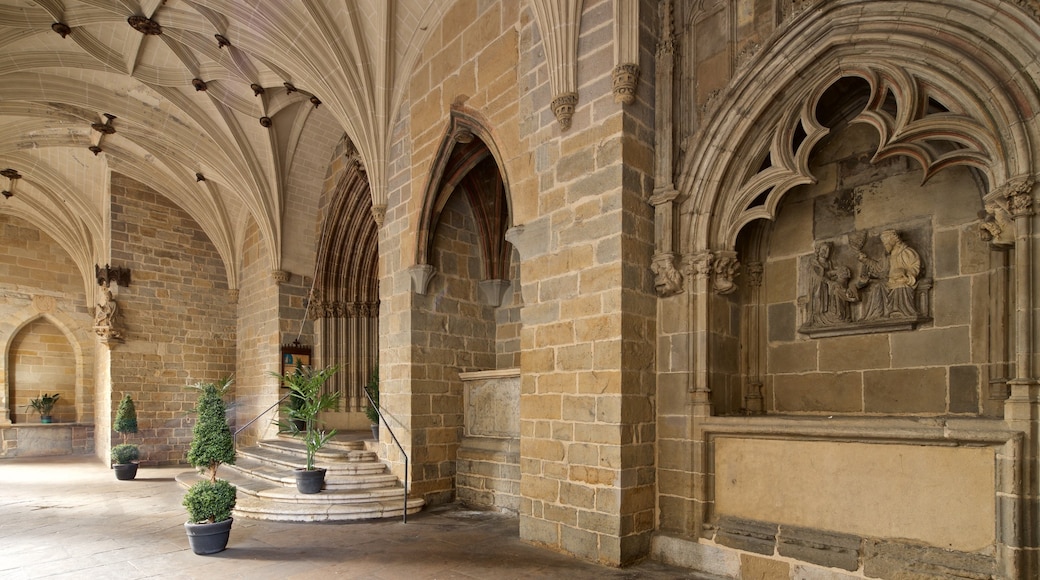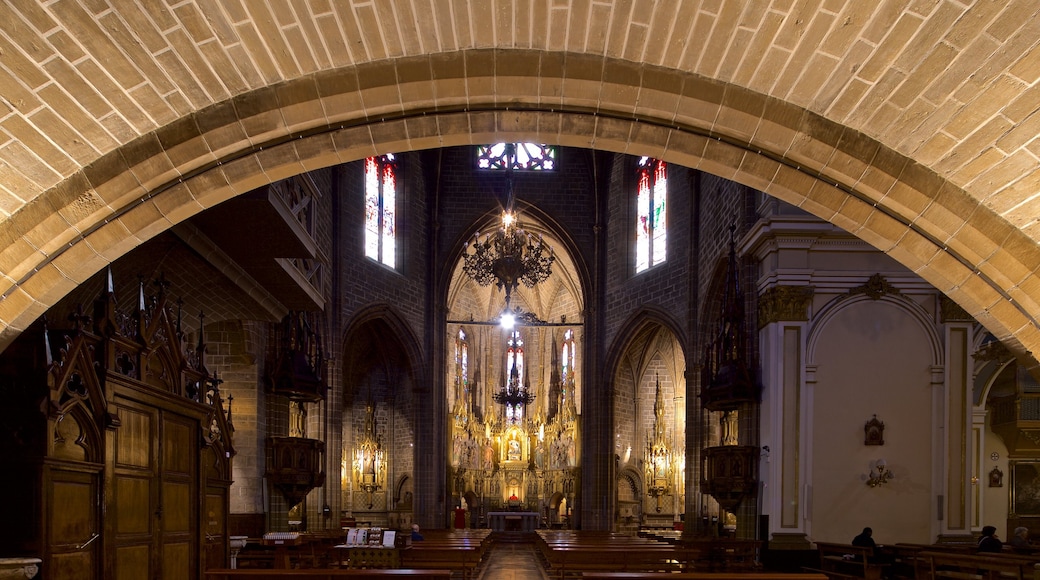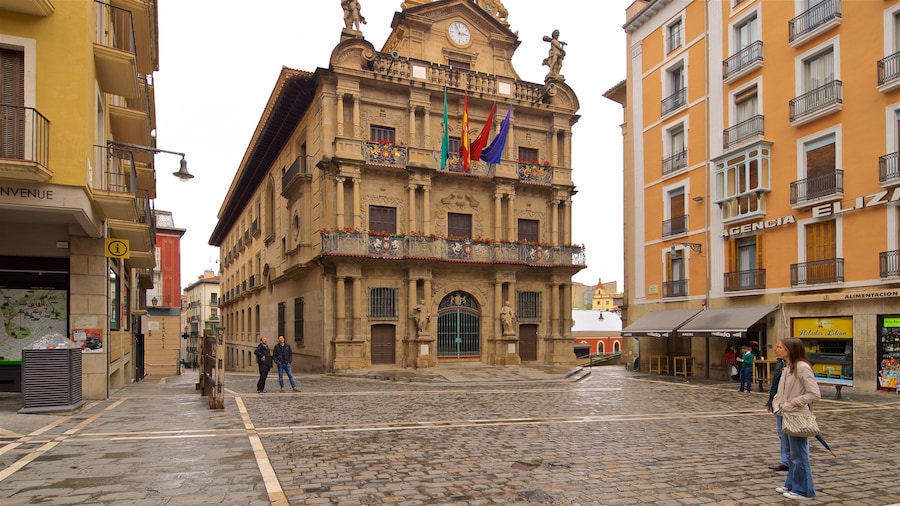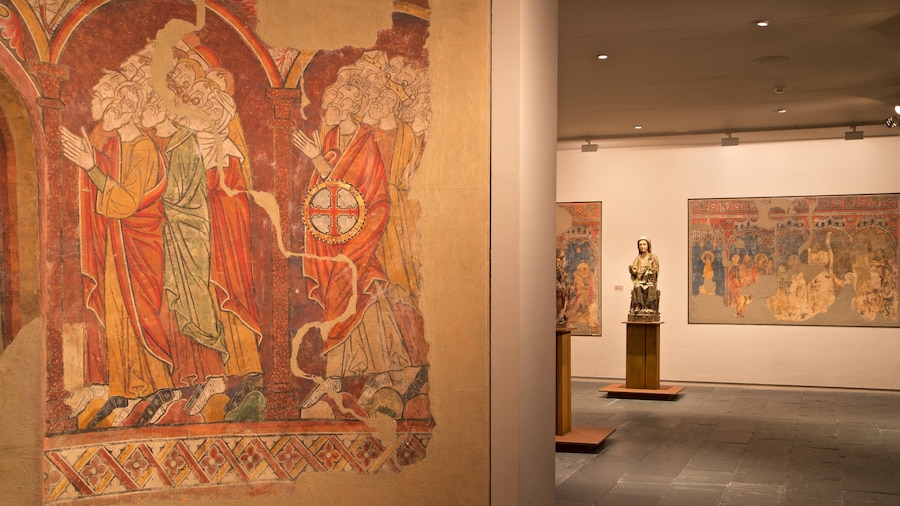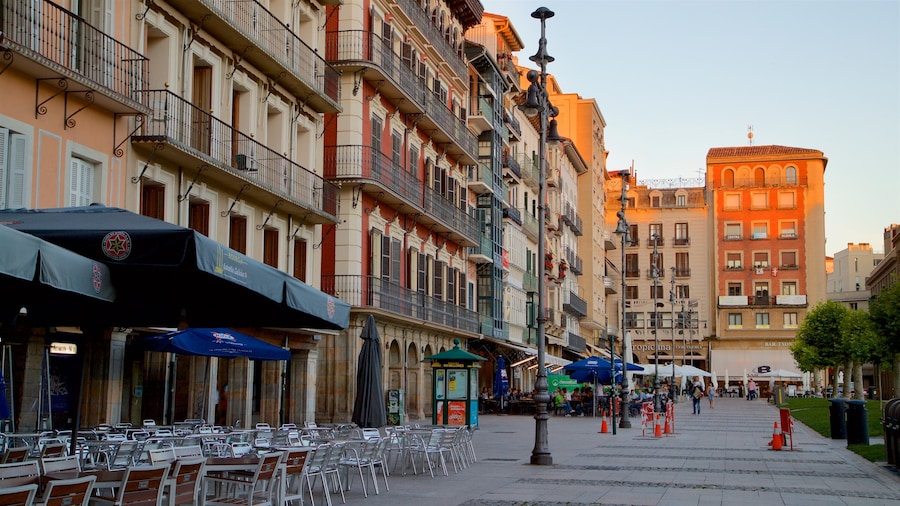Tour an imposing centuries-old church to see its magnificent collection of elaborately carved altarpieces and other precious religious works of art.
The two high towers of the Gothic Church of San Saturnino have been a prominent feature of Pamplona's skyline since the 13th century. The building was designed to be a center for worship and as a defensive fortress to protect citizens from frequent conflicts between medieval boroughs. Go on a self-guided tour of this ancient structure, which plays an important part in the life story of San Fermín. He is the patron saint of the city and was its first bishop.
Start your visit by studying the beautiful exterior. The arched entrance features sculptures of Santiago and San Saturnino and above the door, a representation of the Last Judgment. Other scenes include depictions of the last few days of Jesus' life leading up to his crucifixion.
Look up at the magnificent pair of towers. The south tower houses the bell that signals the start of the running of the bulls during the annual fiesta of San Fermín in July.
Inside the church are a long single nave and several side chapels which house 19th- and 20th-century altarpieces. Stop by the chapel dedicated to the Holy Trinity to see its stained-glass windows and neo-Gothic altarpiece. In the Chapel of San Antonio de Padua see the Baroque sculpture of San Antonio.
Go to the chapel dedicated to the Virgen del Camino, a multi-domed Baroque structure from the mid-19th-century that is located in the space previously occupied by the church's cloister. The spectacular altarpiece houses a 15th-century statue of the Virgin Mary.
As you leave the church look down at the ground. Find the plaque that marks the site of the well in which Pamplona's first Christians were baptized by San Saturnino. Among them was San Fermín.
The centuries-old religious building is located in Pamplona's old town. Keep in mind that parking is limited here because many streets are pedestrianized. If you are going to drive, you can park for a fee in the garages near the historic quarter. The Church of San Saturnino is open daily and admission is free.


